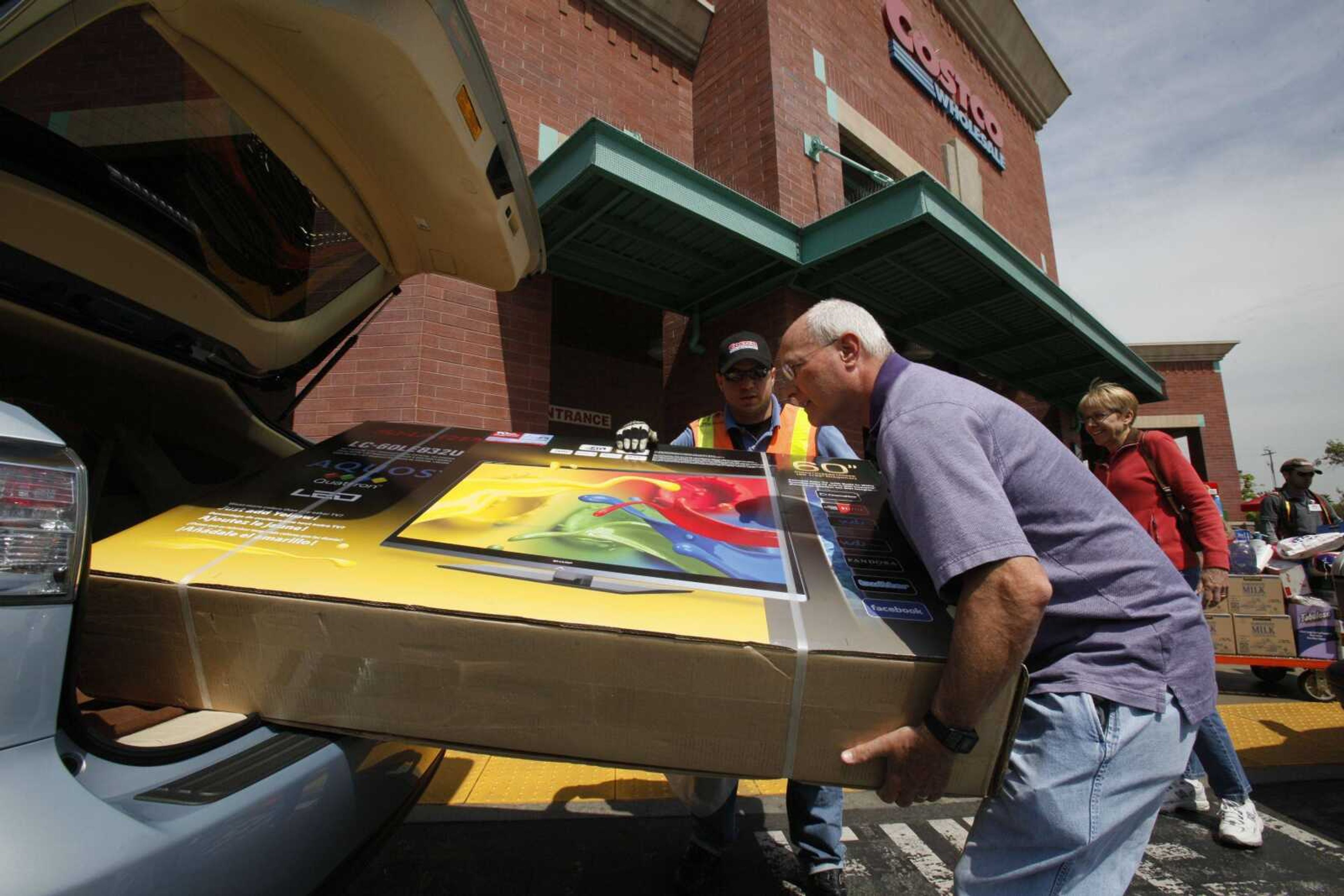Stores turn in strong March sales
NEW YORK -- The economic recovery keeps defying expectations and getting stronger. Robust consumer spending in March is the latest sign that the rebound is entering a self-reinforcing cycle of improvement. Shoppers shrugged off worries about higher gas prices and treated themselves at the mall last month. Retailers from Costco to Victoria's Secret reported surprisingly good sales Thursday, and analysts said people would have spent even more but for the late Easter...
NEW YORK -- The economic recovery keeps defying expectations and getting stronger. Robust consumer spending in March is the latest sign that the rebound is entering a self-reinforcing cycle of improvement.
Shoppers shrugged off worries about higher gas prices and treated themselves at the mall last month. Retailers from Costco to Victoria's Secret reported surprisingly good sales Thursday, and analysts said people would have spent even more but for the late Easter.
The results were the latest economic report to come in better than expected. The private sector added more than 200,000 jobs in each of February and March, and the unemployment rate has fallen more than a full percentage point, to 8.8 percent, in just four months.
Consumer spending, which makes up 70 percent of the economy, is critical to the recovery. The more shoppers spend, the more companies feel good about ramping up production, which means eventually adding workers, who spend more money.
There are signs now that the cycle is taking off. Ajay Banga, the CEO and president of MasterCard Inc., said there's "something changing" in American spending habits.
"The 90 percent of the people who are employed, compared with the 10 [percent who are not, no longer believe that their jobs are at risk," Banga said. "And their willingness to spend has changed compared with six or nine months ago ... when there was a fear."
Overall, revenue at major retailers rose 2 percent over last March, according to the International Council of Shopping Centers. Many analysts had expected it to be flat or to decline slightly. The figures are based on stores open at least a year.
The increase is better than it looks because Easter falls on April 24 this year, three weeks later than last year. Had it fallen in March, retailers' results might have been three to five percentage points better because of holiday spending, analysts say.
There's still plenty for retailers to worry about. Gas now averages more than $3.50 a gallon in almost every state, and food keeps getting more expensive. But "jobs rule, and that is what is determining the underlying strength," said Michael P. Niemira, chief economist at the International Council of Shopping Centers.
Other factors worked against stores. The earthquake, tsunami and nuclear crises in Japan took a toll on Gap Inc., which has more than 150 stores there. It reported a decline that was worse than expected and warned of disappointing earnings. Clothing sellers are starting to raise prices to offset soaring costs for labor in China and for raw materials like cotton.
Americans have more money to spend because of a two-percentage-point cut in the Social Security payroll tax, which will provide most households an additional $1,000 to $2,000 this year. The IRS had also paid out $206 billion in tax refunds through March 25, 1.1 percent more than at the same point last year.
Even so, consumers surveyed in March for the Conference Board's consumer confidence index voiced concerns about inflation and stagnant incomes.
Niemira said price increases, especially for food, may have helped revenue at discount stores. Most increases in clothing prices haven't been passed on to consumers yet.
Costco's revenue at stores opened at least a year were up 8 percent after adjusting for factors like rising gas prices and fluctuating foreign currencies that can make sales comparisons misleading.
To keep sales humming, stores are depending on shoppers like Miguel Guzman, 58, who works in the security business and picked up some extra clothes this week because of recent overtime shifts at work.
"I feel in the last year I'm getting a little more spending money," said Guzman, who was shopping at Manhattan Mall in New York on Thursday. He plans to spend close to $1,000 for Easter, spoiling his 14 nieces and 21 nephews -- about twice as much as he spent last year when his work hours were cut.
He's noticed the rising food prices but isn't concerned.
"When it comes to food, believe it or not, the 99-cent store has everything in there," he said.
------
AP Retail Writer Christina Rexrode in New York contributed to this report.
Connect with the Southeast Missourian Newsroom:
For corrections to this story or other insights for the editor, click here. To submit a letter to the editor, click here. To learn about the Southeast Missourian’s AI Policy, click here.









